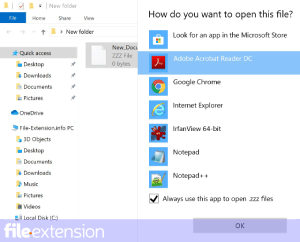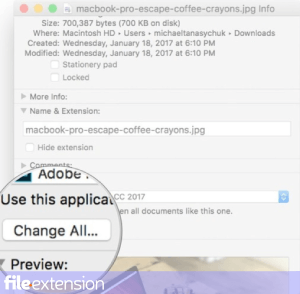
CLI File Extension
Client Management System Customer
-
DeveloperHawkSoft
-
Category
-
Popularity3 (3 votes)
What is CLI file?
CLI is a file extension commonly associated with Client Management System Customer files. Client Management System Customer specification was created by HawkSoft. CLI file format is compatible with software that can be installed on system platform. CLI file belongs to the Misc Files category just like 6033 other filename extensions listed in our database. Client Management System is by far the most used program for working with CLI files. On the official website of HawkSoft developer not only will you find detailed information about theClient Management System software, but also about CLI and other supported file formats.
Programs which support CLI file extension
Files with CLI extension, just like any other file formats, can be found on any operating system. The files in question may be transferred to other devices, be it mobile or stationary, yet not all systems may be capable of properly handling such files.
How to open file with CLI extension?
Being unable to open files with CLI extension can be have various origins. On the bright side, the most encountered issues pertaining to Client Management System Customer files aren’t complex. In most cases they can be addressed swiftly and effectively without assistance from a specialist. The list below will guide you through the process of addressing the encountered problem.
Step 1. Download and install Client Management System
 The most common reason for such problems is the lack of proper applications that supports CLI files installed on the system. The solution to this problem is very simple. Download Client Management System and install it on your device. On the top of the page a list that contains all programs grouped based on operating systems supported can be found. One of the most risk-free method of downloading software is using links provided by official distributors. Visit Client Management System website and download the installer.
The most common reason for such problems is the lack of proper applications that supports CLI files installed on the system. The solution to this problem is very simple. Download Client Management System and install it on your device. On the top of the page a list that contains all programs grouped based on operating systems supported can be found. One of the most risk-free method of downloading software is using links provided by official distributors. Visit Client Management System website and download the installer.
Step 2. Check the version of Client Management System and update if needed
 If the problems with opening CLI files still occur even after installing Client Management System, it is possible that you have an outdated version of the software. Check the developer’s website whether a newer version of Client Management System is available. Software developers may implement support for more modern file formats in updated versions of their products. This can be one of the causes why CLI files are not compatible with Client Management System. The most recent version of Client Management System is backward compatible and can handle file formats supported by older versions of the software.
If the problems with opening CLI files still occur even after installing Client Management System, it is possible that you have an outdated version of the software. Check the developer’s website whether a newer version of Client Management System is available. Software developers may implement support for more modern file formats in updated versions of their products. This can be one of the causes why CLI files are not compatible with Client Management System. The most recent version of Client Management System is backward compatible and can handle file formats supported by older versions of the software.
Step 3. Assign Client Management System to CLI files
After installing Client Management System (the most recent version) make sure that it is set as the default application to open CLI files. The next step should pose no problems. The procedure is straightforward and largely system-independent

Change the default application in Windows
- Clicking the CLI with right mouse button will bring a menu from which you should select the option
- Next, select the option and then using open the list of available applications
- To finalize the process, select entry and using the file explorer select the Client Management System installation folder. Confirm by checking Always use this app to open CLI files box and clicking button.

Change the default application in Mac OS
- From the drop-down menu, accessed by clicking the file with CLI extension, select
- Open the section by clicking its name
- From the list choose the appropriate program and confirm by clicking .
- A message window should appear informing that This change will be applied to all files with CLI extension. By clicking you confirm your selection.
Step 4. Ensure that the CLI file is complete and free of errors
You closely followed the steps listed in points 1-3, but the problem is still present? You should check whether the file is a proper CLI file. Being unable to access the file can be related to various issues.

1. Check the CLI file for viruses or malware
If the file is infected, the malware that resides in the CLI file hinders attempts to open it. Scan the CLI file as well as your computer for malware or viruses. If the CLI file is indeed infected follow the instructions below.
2. Check whether the file is corrupted or damaged
Did you receive the CLI file in question from a different person? Ask him/her to send it one more time. During the copy process of the file errors may occurred rendering the file incomplete or corrupted. This could be the source of encountered problems with the file. If the CLI file has been downloaded from the internet only partially, try to redownload it.
3. Ensure that you have appropriate access rights
Some files require elevated access rights to open them. Log out of your current account and log in to an account with sufficient access privileges. Then open the Client Management System Customer file.
4. Check whether your system can handle Client Management System
If the systems has insufficient resources to open CLI files, try closing all currently running applications and try again.
5. Verify that your operating system and drivers are up to date
Latest versions of programs and drivers may help you solve problems with Client Management System Customer files and ensure security of your device and operating system. Outdated drivers or software may have caused the inability to use a peripheral device needed to handle CLI files.
Do you want to help?
If you have additional information about the CLI file, we will be grateful if you share it with our users. To do this, use the form here and send us your information on CLI file.

 Windows
Windows 
